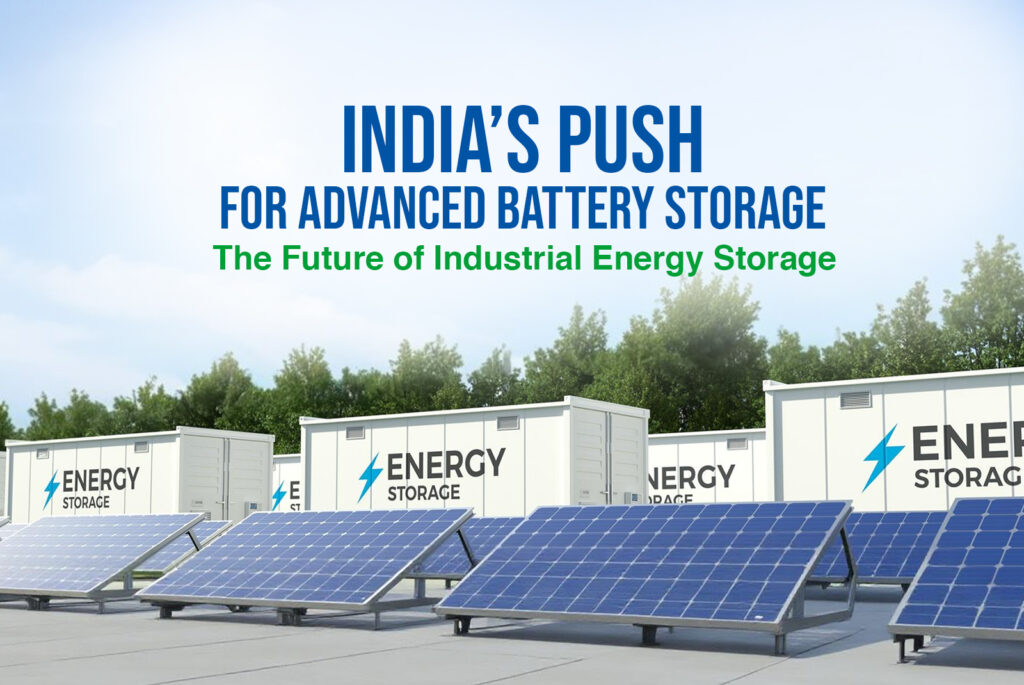India’s Growing Need for Industrial Battery Storage
As India accelerates its transition toward renewable energy and industrial electrification, the demand for advanced battery storage solutions has skyrocketed. With an increasing focus on solar and wind energy integration, electric mobility, and grid stability, industries are looking for efficient, high-performance, and scalable battery technologies to power their operations.
The Indian government’s Production-Linked Incentive (PLI) scheme for battery manufacturing, coupled with private sector investments, is driving massive growth in the energy storage sector. As per industry reports, India’s industrial battery market is projected to reach $18.28 billion by 2030, fueled by smart grids, automation, and clean energy policies.
New Battery Technologies Leading the Industrial Shift
While lithium-ion (Li-ion) batteries remain the dominant choice, industries are now exploring next-gen energy storage solutions to overcome challenges such as raw material dependency, safety concerns, and high costs.
Some of the latest battery innovations gaining traction include:
- Sodium-Ion Batteries – With abundant raw materials and lower costs, sodium-ion batteries are emerging as a strong alternative to lithium-ion for industrial and grid storage applications. Companies like Natron Energy are already investing in large-scale Na-ion battery production.
- Solid-State Batteries – These offer higher energy density, faster charging, and improved safety compared to conventional Li-ion batteries, making them ideal for data centers and heavy industrial applications.
- Magnesium-Ion Batteries – This new technology provides better thermal stability, higher voltage, and longer lifespan, making it a promising solution for high-power industrial systems.
India is actively exploring these next-gen battery technologies to reduce import dependency and strengthen its position as a global energy storage hub.
Government Push and Private Sector Investments
Recognizing the critical role of battery storage in achieving its net-zero goals, India has launched several initiatives to boost domestic battery production:
- PLI Scheme for Advanced Chemistry Cell (ACC) Batteries – Aims to promote local manufacturing and reduce reliance on Chinese imports.
- Grid-Scale Battery Storage Projects – The government has announced incentives for large-scale energy storage systems to support renewable energy integration.
- EV and Industrial Battery Investments – Companies like Reliance, Tata, and Exide are investing heavily in gigafactories and R&D for advanced battery technologies.
Meanwhile, global players are also eyeing India’s industrial battery market, with major investments in local manufacturing and technology partnerships.
Challenges & The Road Ahead
Despite the rapid advancements, India’s battery storage sector faces challenges such as:
- Raw Material Constraints – India still relies on imports for key battery materials like lithium, cobalt, and nickel.
- Recycling Infrastructure – Battery waste management remains underdeveloped, creating sustainability concerns.
- High Costs of Next-Gen Batteries – While promising, solid-state and sodium-ion batteries are still in early commercialization stages.
To overcome these challenges, India needs to scale up domestic production, invest in battery recycling, and accelerate R&D in emerging technologies. With the right policy framework and industry collaboration, the country is poised to become a global leader in advanced energy storage solutions, driving industrial growth and a sustainable energy future.

